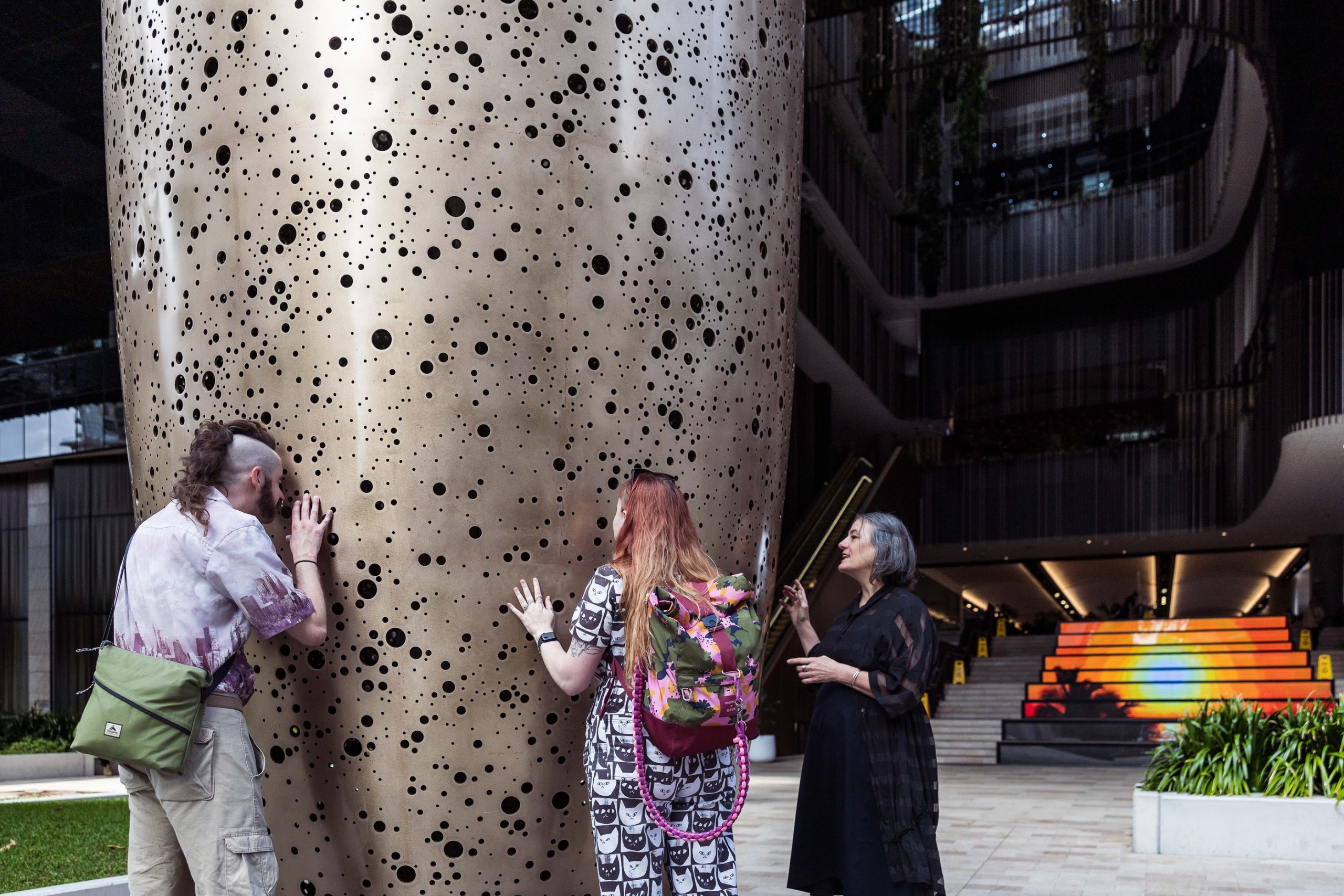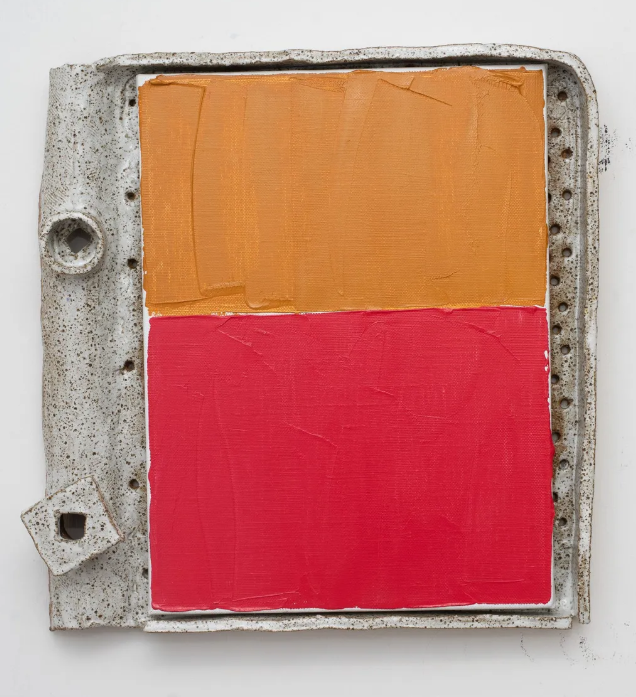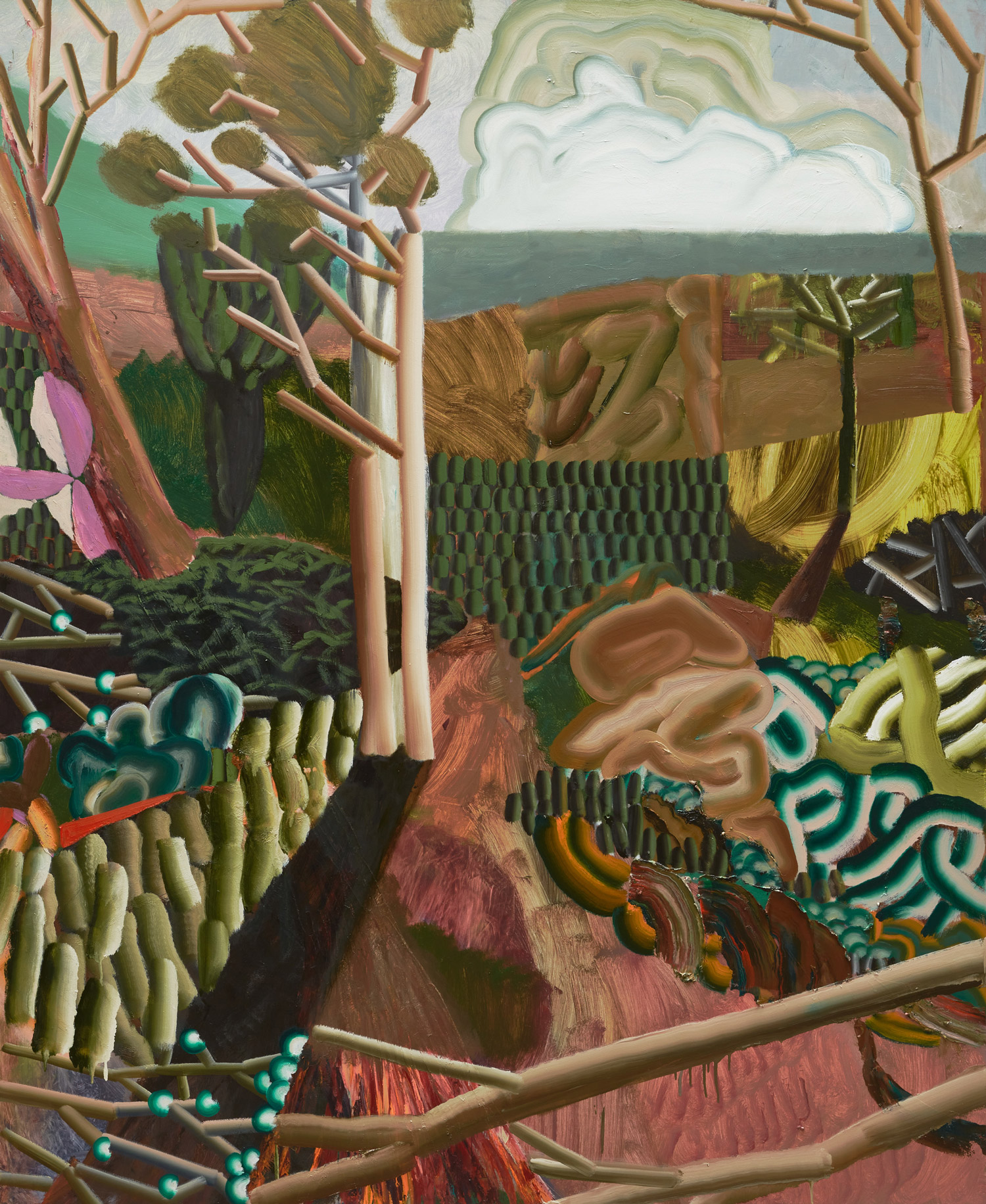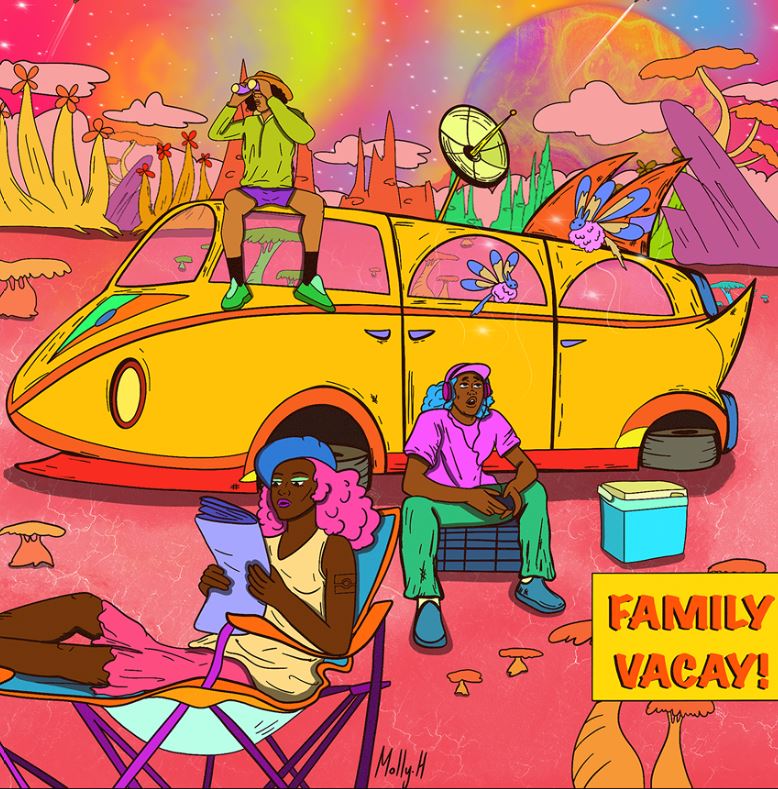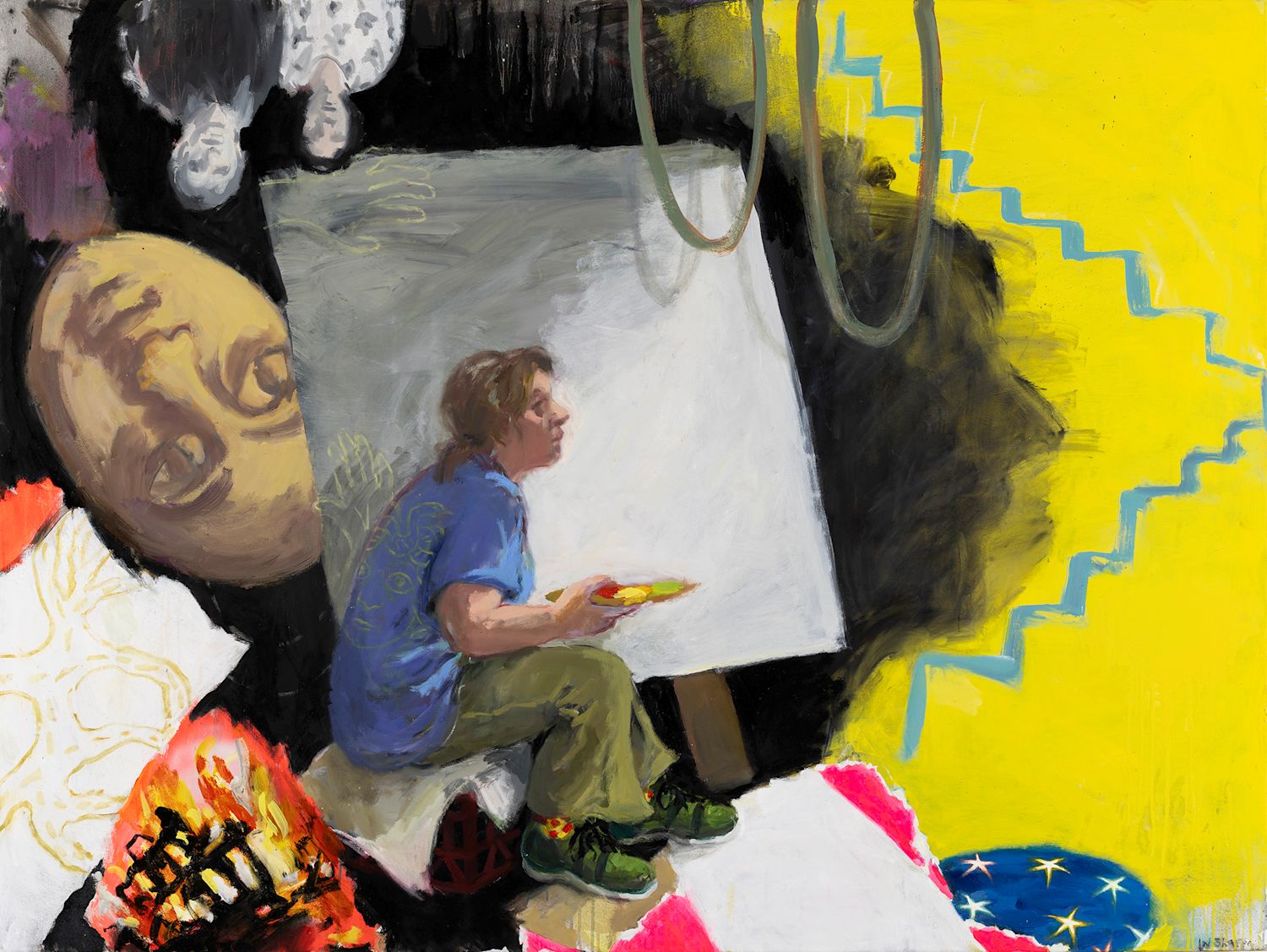
In this new series, Michael Cook moves into the art-historical tradition of still life, while continuing to explore the devastating impact of colonisation on Australia’s First Nations peoples. Cook’s narrative broadens to encompass the global repercussions of environmental degradation. Grounded in a photographic aesthetic that echoes Dutch Old Master paintings, these images are invested with potent symbolism, and have a simmering emotional register in their inky darkness. A central tableau is featured in each image, beautifully lit to expose the detail of what is presented. Choreographed arrangements of plants, animals, objects and food systematically examine, as the narrative unfolds, the industry, practices, and traditions that have so effectively brought such damage to traditional Aboriginal culture, the natural environment of the Australian continent — and the globe.
The series opens with Nature morte (Exploitation) which tackles the mining of fossil fuels. Australian birds and marine creatures are displayed on platters as if for a feast. However, on closer examination we see that the animals are shiny with oil. The central character of this fuel resource and its industrial might since the first industrial revolution (1760–1840) is exposed in this poignant still life. Central to the image is a heron that holds an oil-soaked fish in its beak. Platters of fish, crabs and lobsters are juxtaposed with a bowl full of coal and a silver platter of still oil, presented as edible delicacies and sinister in their visually seductive qualities.
The narrative moves from the global curse of fossil fuels and their role in climate change to the damage that colonisation has wrought on so many Indigenous societies. Nature morte (Colonisation) evokes the practice that displaced so many Indigenous peoples throughout the world during the eighteenth and nineteenth centuries. While the open book features a portrait of Captain James Cook (who led the “discovery” of Australia), his ink well, sword, and an Aboriginal gweagal (shield) he collected during first contact (a hole in the shield may attest to the violence of this encounter), these objects evoke all British explorers during the United Kingdom’s period of global colonisation and dominance.
Nature morte (Aliment) is a cornucopia of native bush foods. An emu stands in the middle of the table — highlighting the large bird’s role in the Aboriginal diet as a staple and in bush medicine1. The emu’s nest is luxurious in its feathered padding and the black eggs glow with life. The darkness of the background and the light, with its ‘painted-on’ quality, speaks to a culture which flourished with the abundance and variety of naturally harvested food. Aliment is an anagram of ailment, and its language closeness also evokes the health benefits of healthy foods (and the many lifestyle disease ailments that are caused directly through the processed food products common in modern Western economies).
Glossy black cockatoos emerge from the darkness in the next image, to frame (like witnesses) the central tableau. These birds were prized for their rarity and unexpected colour by the early colonisers. In Nature morte (Blackbird) they refer to the practice of slavery that was at the heart of the Australian sugar industry, when South Sea Islanders were brought to Australia to work in the cane fields (1863–1904). This practice, known as “blackbirding”, lured islanders onto ships, often using music (represented by the viola in this image) to pique their curiosity and facilitate their kidnap. One of the birds sits on a set of scales which read
- “The emu is inextricably linked with the wide grasslands of Australia, the landscape managed by Aboriginals. The fate of the emu, people, and grain are locked in step because, for Aboriginal people, the economy and the spirit are inseparable”. Bruce Pascoe, Dark Emu, Magabala Books, 2014, Broome, Frontispiece.
like a cross, representing the many deaths that followed this inhumane practice. The health risks of sugar are alluded to with the weight that is visible on the scales. Exotic flowers in vases are wilted, an allusion to the sadness caused by this cruel practice, but also the insidious and addictive qualities of sugar and the very difficult conditions under which the islanders were forced to work.
Nature morte (Flora) builds an arrangement of healthy native flowers symmetrically around a lyrebird. In this image, the native flowers physically overwhelm a bird known for the beauty of its song. Imported European-style foods in the image are decomposing, infested with native insects and witchetty grubs, and a British flag is moth-eaten. This deterioration refers to the disruption that white settlement brought, its corruption and environmental imbalances. In contrast, native nectar birds hover around the flowers evoking a system which thrived prior to colonisation.
Religion has been a major disruptor of life to Aboriginal Australians, who were removed from lands where their cultural connections had existed for millenia. This situation was also visible in other places in the world, signified by the crow which sits (an augury of death), on the globe. In Nature morte (Religion), a possum (left) and white cockatoo (right) survey the objects untidily arrayed between them. These include a bible, a small statue of Jesus on the cross, candles, a skull, the ornate priest’s vestments, and dried leaves from a gum tree — this scene is beautiful yet desolate.
Nature morte (Agriculture) also notes the changes in practices from the traditional sustainable Indigenous methods to the more exploitative commerce at the heart of introduced European methods. On the left, a silver teapot holds cotton plants, and broken kangaroo grass (which had been harvested for its seed for 65,000 years without environmental cost). The broken damper in the centre (and reflected in the mirror) is covered in honey ants and describes the theft of land from Australia’s Aboriginals. Red soil spills from it like blood, symbolising the closeness of this nature/culture connection and the insurmountable cost of this loss. Behind the mirror a predatory barn owl (native to the United Kingdom) descends.
Finally, Nature morte (Veiled bird) has a sombre and painterly darkness, out of which a central light reveals a tableau of stillness. A bird stands, head veiled by a shroud made from the dried leaf of a native lily. She holds an emu feather gently in her beak, while her leg is manacled, attached by a chain which rests in the gathered linen tablecloth. The veiled bird, her three eggs resting in the nest and the altar-like candle recently snuffed out, allude to nurturing instincts derailed by substance addiction. The emu feather, renowned for its softness, suggests good intentions despite an enslavement to addiction (drugs and alcohol evoked by the empty bottles, and broken poppies in a floral arrangement). The central leaf is worn like a cape which blinds this bird, physically and metaphorically, and takes us to the pieta, the mother’s loss of her progeny.
A palpable sadness pervades this image. The emu female lays the eggs, but chicks are nurtured to maturity by the male. Cook was adopted into a white family — and has never met his Indigenous father. In its poignancy we witness the anguish of personal disconnection, juxtaposed with colonisation’s devasting impact and its ongoing ramifications. The translation of the French in the title of this series, Natures mortes is “dead nature”. And so it may prove, not just in Australia but throughout the world — if the “continuance” practised for so long by Indigenous clans remains at odds with the modern economy. Yet in the eggs lies a seed of hope, an inherent belief in the individual over environment, and the redemptive nature of culture.
Louise Martin-Chew, February 2021
Image: NATURE MORTE (VEILED BIRD ) 2021



